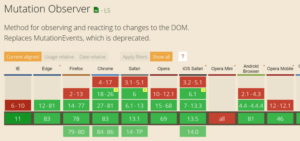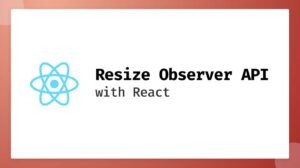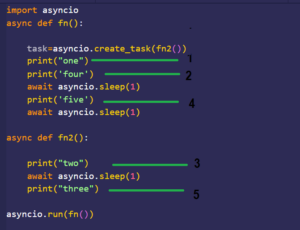Digital Artistry Unleashed: A Comprehensive Guide to an Easy Digital Nose Job in Photoshop

Introduction:
In the realm of digital imaging and photo manipulation, Photoshop stands as the ultimate canvas where creators can unleash their creativity and refine the subtleties of facial features. One such nuanced artistry is the digital nose job, a technique that allows artists and photographers to subtly enhance or reshape the nose in a way that complements the overall aesthetics of a portrait. In this comprehensive guide, we will delve into the art of an easy digital nose job in Photoshop, exploring essential tools, step-by-step techniques, and advanced strategies for achieving natural and seamless results.
Understanding the Digital Nose Job in Photoshop:
A digital nose job involves using Photoshop’s powerful tools and features to make subtle adjustments to the shape, size, and symmetry of a subject’s nose in a photograph. Whether for cosmetic enhancement or artistic expression, the goal is to achieve a harmonious balance that enhances the overall facial aesthetics without compromising realism. Photoshop’s transformative capabilities provide artists with the tools to refine facial features, and the digital nose job is a testament to the precision and creativity achievable in the realm of digital art.
Essential Tools for a Digital Nose Job:
- Liquify Filter:
- The Liquify filter in Photoshop is a game-changer for reshaping facial features, including the nose.
- Use the Forward Warp tool to subtly adjust the contours of the nose, refining its shape and proportions.
- Clone Stamp Tool:
- The Clone Stamp tool is essential for duplicating and blending textures in the image.
- It can be used to smooth out transitions and correct imperfections resulting from nose adjustments.
- Healing Brush Tool:
- The Healing Brush tool is useful for seamlessly blending tones and textures.
- It aids in addressing any discrepancies in skin texture caused by the digital nose job.
- Pen Tool:
- The Pen tool is valuable for creating precise selections and paths around the nose.
- It provides control during adjustments and helps maintain accuracy in reshaping.
- Layer Masks:
- Layer masks are crucial for creating non-destructive edits.
- They allow artists to selectively apply or conceal adjustments, ensuring a seamless integration with the original image.
Step-by-Step Guide to an Easy Digital Nose Job:
- Open the Image in Photoshop:
- Begin by opening the image containing the subject’s face in Photoshop.
- Duplicate the Background Layer:
- Duplicate the background layer to create a copy that can be worked on without altering the original image.
- This ensures that the original photo remains intact for reference.
- Select the Liquify Filter:
- Access the Liquify filter by navigating to the “Filter” menu and selecting “Liquify.”
- Use the Forward Warp tool to make subtle adjustments to the nose’s shape, size, or symmetry.
- Refine Contours and Proportions:
- Focus on refining the contours and proportions of the nose using the Liquify filter.
- Pay attention to details such as the bridge, tip, and nostrils for a natural and proportional result.
- Use the Clone Stamp Tool:
- Address any texture discrepancies or artifacts resulting from the Liquify adjustments using the Clone Stamp tool.
- Sample nearby areas and carefully blend textures to create a seamless appearance.
- Smooth Transitions with Healing Brush:
- Use the Healing Brush tool to smooth transitions between the adjusted and original areas.
- This tool helps maintain a consistent skin texture throughout the image.
- Create Precise Selections with the Pen Tool:
- Utilize the Pen tool to create precise selections around the nose.
- This step is particularly useful for targeted adjustments and maintaining accuracy in reshaping.
- Apply Adjustments with Layer Masks:
- Add a layer mask to the adjusted layer to create a non-destructive workflow.
- Use the layer mask to selectively reveal or conceal the digital nose job, ensuring a seamless blend with the original image.
- Fine-Tune Details:
- Zoom in and fine-tune details such as highlights, shadows, and contours to enhance realism.
- Adjust opacity levels and layer blending modes as needed for a natural and cohesive result.
- Evaluate Before-and-After:
- Toggle the visibility of the adjusted layer to assess the before-and-after results.
- Ensure that the digital nose job enhances the overall facial aesthetics while maintaining a realistic appearance.
Advanced Techniques for Precision Digital Nose Jobs:
- Adjust Lighting and Shadows:
- Use adjustment layers, such as Curves or Levels, to refine lighting and shadows around the nose.
- This step ensures that the digital nose job seamlessly integrates with the overall lighting in the image.
- Color Correction:
- Apply subtle color correction to the adjusted areas to match the skin tones of the original image.
- Use adjustment layers like Color Balance or Hue/Saturation for precise color adjustments.
- Hair and Background Integration:
- Consider adjustments to the hairline or background to ensure a harmonious integration with the reshaped nose.
- Use brushes, masks, and blending modes to refine these areas.
- Multiple Layers for Subtle Changes:
- Instead of making drastic adjustments on a single layer, consider spreading the changes across multiple layers.
- This allows for more controlled and nuanced alterations.
- Natural Symmetry:
- Maintain a natural sense of symmetry during the digital nose job.
- Avoid over-correcting and strive for a result that enhances the subject’s unique features without appearing artificial.
Workflow Integration and Efficiency:
- Save Iterative Versions:
- Save iterative versions of the image at various stages of the digital nose job.
- This allows for easy comparison and the ability to revisit specific adjustments if needed.
- Collaborative Editing:
- Collaborate with clients or subjects during the editing process to align the final results with their preferences.
- Encourage feedback and make adjustments collaboratively to ensure client satisfaction.
- Documenting Changes:
- Document the changes made during the digital nose job by keeping a record of adjustment layers and settings.
- This facilitates transparency in the editing process and allows for efficient troubleshooting if required.
Conclusion:
The art of an easy digital nose job in Photoshop showcases the transformative capabilities of digital imaging tools in the hands of skilled artists and photographers. By mastering essential tools, following a step-by-step guide, and incorporating advanced techniques for precision adjustments, creators can achieve results that enhance facial aesthetics while preserving the natural essence of the subject.
As digital artists embark on the journey of reshaping noses in Photoshop, they open the door to a realm of creative possibilities where subtlety and skill converge. The digital nose job is not just about altering features; it’s about elevating portraits with finesse and ensuring that each adjustment contributes to a harmonious and captivating visual narrative.




